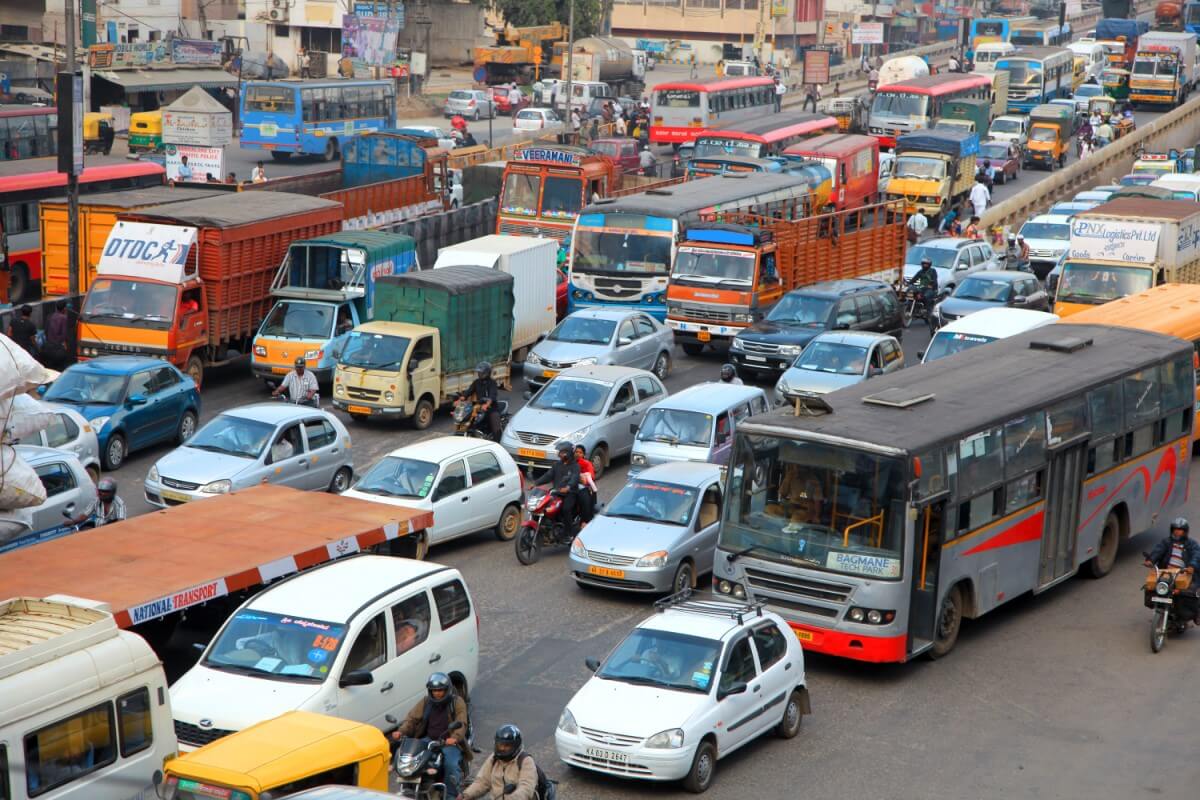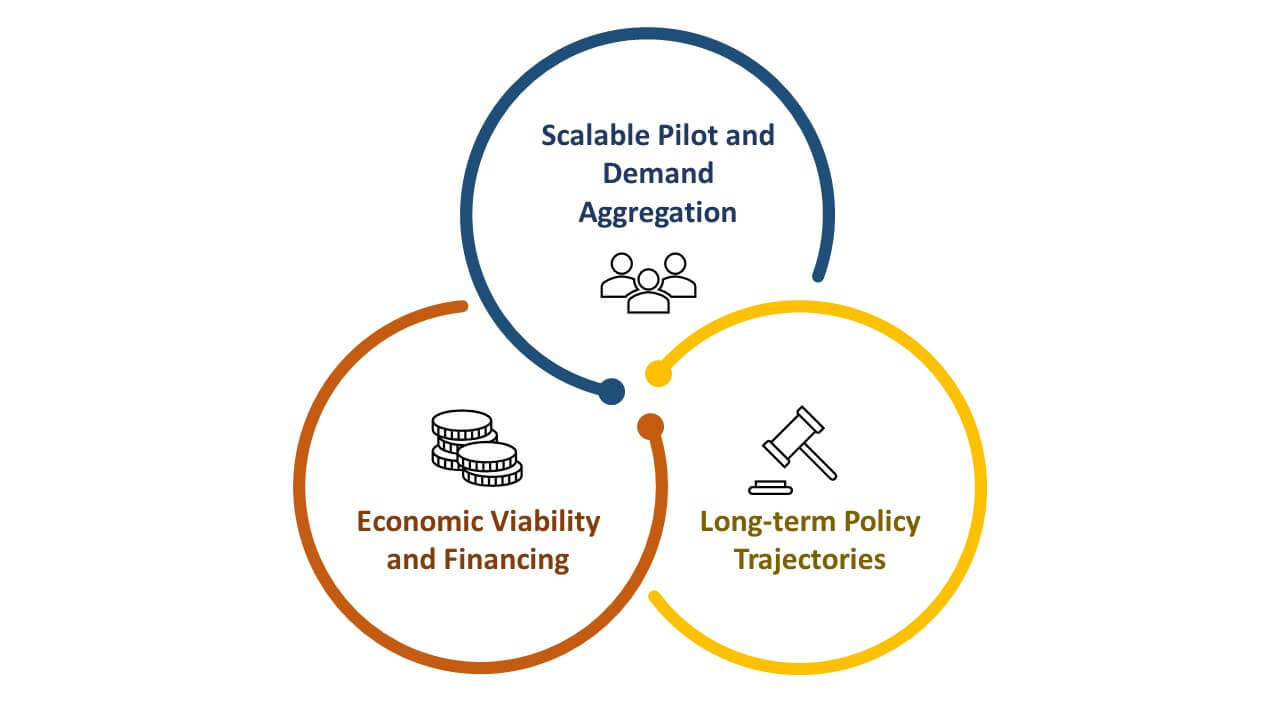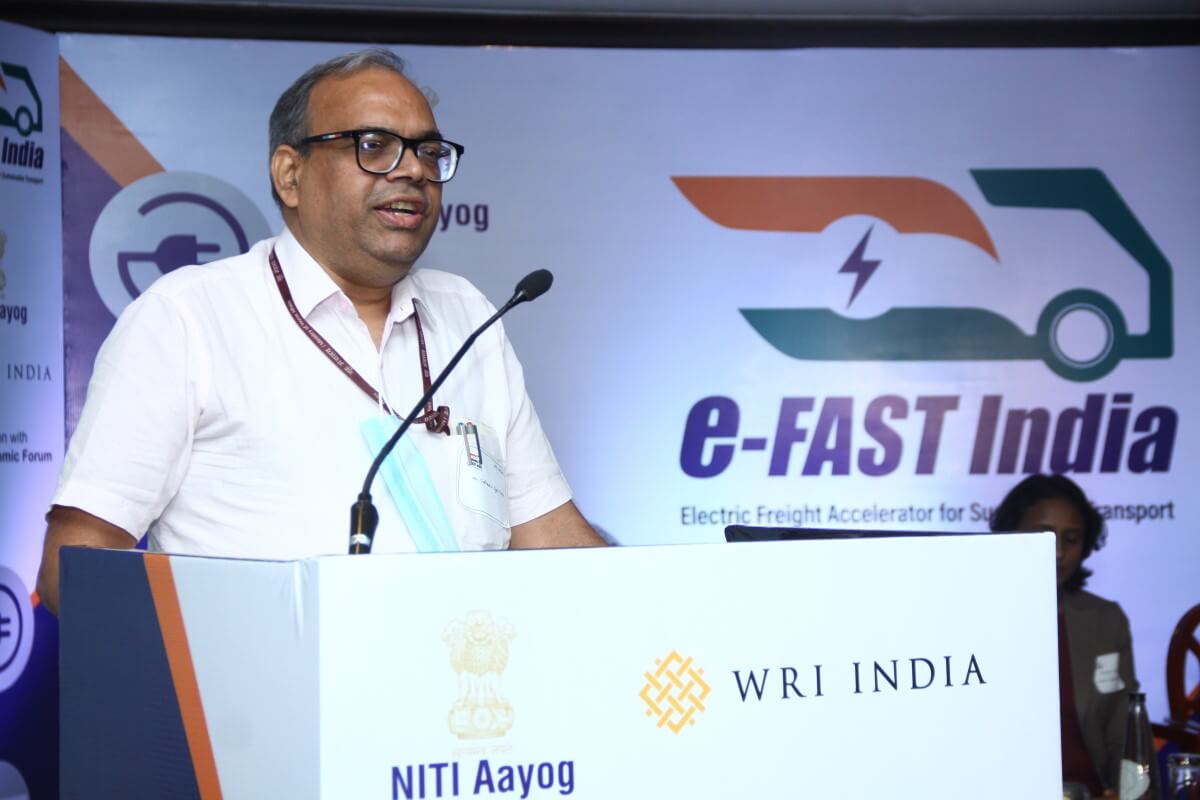Decoupling Road Freight from Emissions

India is one of the fastest-growing economies in the world, despite an ongoing global slowdown. This growth must happen without compromising on sustainability, which is a cornerstone of holistic development and critical to India meeting its net-zero targets.
Much of the decarbonizing focus is on the transport sector, which is responsible for about 15% of the country’s CO2 emissions. The road sector contributes significantly to transport emissions at a staggering 92%. To combat this, India has set a national target of electric vehicles (EVs) to comprise 30% of all new vehicles sales by 2030.
India has about 2.8 million EVs registered as of August 2023, and this rapid uptake has been underpinned by investments in automobiles, battery technology and charging infrastructure. Policies, such as Faster Adoption and Manufacturing of Hybrid and Electric Vehicles (FAME) and production-linked incentives (PLIs), have helped boost the electric two-wheeler and three-wheeler segments. However, one critical sector that has been relatively overlooked, but is slowly gaining ground, is road freight.

India has the fourth-largest trucking market which is expected to grow four times by 2050. Freight vehicles, despite comprising less than 3% of total vehicles, consume 28.25% of the nation's diesel and contribute to 34% of road transport emissions. To address climate concerns and ensure energy
security, a shift to zero-emission trucking is imperative. This must be complemented by greening the electrical grid to further reduce indirect emissions.
Challenges in E-Freight
The transition to zero-emission trucks (ZETs) presents numerous challenges and barriers. Based on the specifications of e-trucks currently in the market, a battery electric truck (BET) can have a range of 110-180 km on a single charge, making electric medium and heavy-duty vehicles (e-MHDVs) viable only for short to medium hauls. In the Indian trucking scenario, an MHDV travels 37,000-60,000 km annually. The limited range and extended charging times for battery electric trucks (BETs) limit usage to shorter distances. The scarcity of charging infrastructure and battery swapping options make refueling on the go a practical challenge.
Overloading of trucks can diminish this range even further. Additionally, higher upfront costs, battery replacement needs, and increased capital expenditure place a financial strain on users.
The freight ecosystem is driven by a complex network of stakeholders which includes shippers, logistic service providers (LSPs), original equipment manufacturers (OEMs), policymakers and charge point operators (CPOs). Collaborative efforts within the freight ecosystem are pivotal in untangling this complex knot, paving the way for sustainable progress.
The e-FAST platform (Electric Freight Accelerator for Sustainable Transport), anchored by NITI Aayog and supported by WRI India, recognizes these challenges and aims to foster the uptake of e-trucks through fostering collaboration and offering technical assistance.
The platform identifies three key factors that can drive the demand-supply cycle and can help formulate a financially feasible and viable solution design that accelerates the adoption of electric trucks.

Scalable Pilot and Demand Aggregation
The freight ecosystem transports different products across diverse terrains. As a result, the sector has a range of operational requirements that needs to be catered to. Pilot projects that can help identify the right product for a use case can better address on-ground challenges. Furthermore, stakeholder collaborations and exploration of financial and business models can boost confidence within the ecosystem.
Aggregating demand can facilitate bulk procurement, lowering the unit cost of ZETs by optimizing their manufacturing processes and logistics operations. Increased competition will stimulate innovations and expand the scope for standardization. This aggregated demand can also en sureefficient utilization of infrastructure, ultimately leading to lowered total cost of ownership (TCO).
Implementation of pilot projects followed by demand aggregation can be facilitated through the active participation of the private sector. By designing pilot projects in various geographical locations and sectors, the challenge of scaling up can be surmounted without disrupting large-scale business operations. Leveraging the confidence and learnings from the early movers can help enable effective, industry-wide, scaling up.
It is also crucial to complement these efforts with the strengthening of charging infrastructure. Adequate planning and reinforcement of the electrical grid will be essential to accommodate the growing energy demands of electric trucks.
Economic Viability and Financing
The data on the operational costs and performance capabilities of electric trucks is limited when compared to data on conventional trucks. A detailed study of unit economics is essential for addressing this. Gathering verified data will provide clarity and help address the higher capital costs associated with transitioning to electric trucks.
The insights gained from pilot projects, followed by scaled-up demand from these early adopters, will contribute to untying the financial knot. Better clarity of unit economics coupled with successful pilots will help establish confidence with financing partners.
Long-term Policy Trajectories
Decision-makers play a pivotal role in accelerating the process by creating a conducive policy landscape for freight electrification. Evidence-based decisions also have the potential to bring down the cost of capital.
Advancing freight electrification requires supportive policy action at the federal, state and local levels. Implementing measures that address the soft costs associated with infrastructure development can aid affordability and accessibility. Analyzing the need and impact of freight-specific incentives, like FAME and PLI, is crucial. Leveraging learnings from global examples such as California, the European Union and China can help identify solutions that can be tailored to the Indian context.
Additionally, implementing fuel-efficiency norms and sales mandates, as observed in some developed economies, can serve as effective tools for promoting freight electrification. Streamlining the permitting processes, standardizing charging infrastructure, implementing emission tracking and emission capping mechanisms and updating the automobile credit trading system can also help enable this transition while minimizing the financial burden on the public sector.

The successful transition to an electric freight ecosystem will hinge on this three-pronged approach. Active participation of private players in demand aggregation and pilot deployment, further reinforced by supportive policies, can instill confidence within the ecosystem.
Given the intricate nature of the freight ecosystem, it is challenging for any single entity or sector to address the complexities on its own. All stakeholders must collaborate effectively to map demand and supply, which can help lower unit economics, to promote affordability and accessibility. Consolidated efforts are imperative for navigating this transformative journey and laying the foundation for a cleaner and more energy-secure tomorrow.
